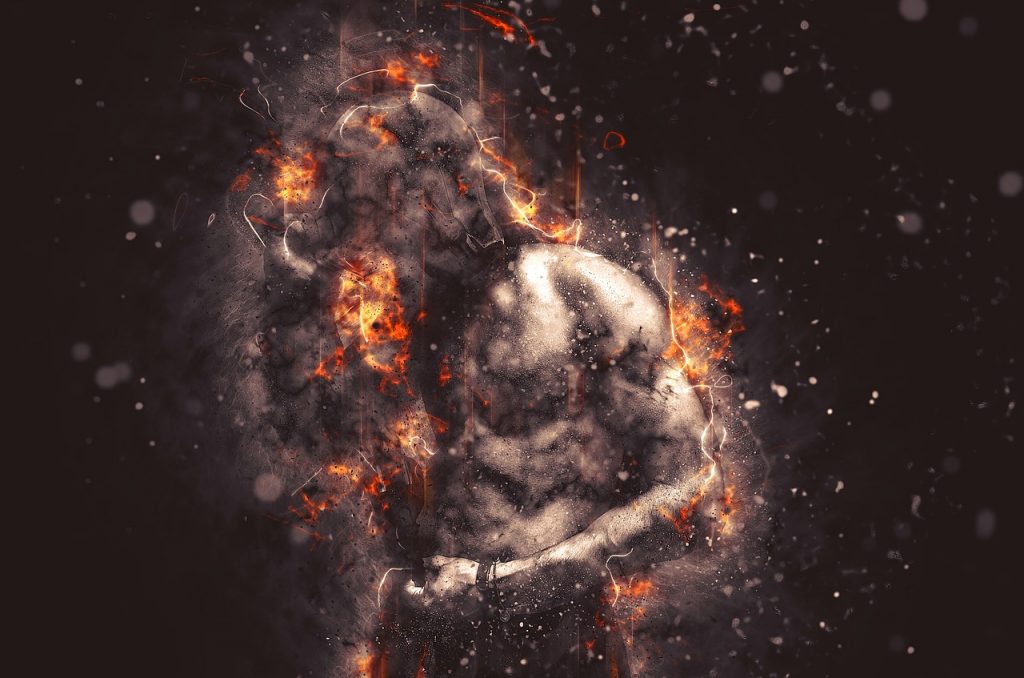What are the origins of anger?
Rage. Fury. Wrath. Simmering, seething, exploding with anger. Simply seeing language associated with it evokes an emotional response, and alludes to something building below the surface, forging an avenue of escape.
In our society, people are taught to hold in and deny the very existence of anger, rather than viewing it as a natural human response to identify, explore and wield, not to harm, but to transform.
Why Are You So Angry?
Anger typically begins to develop in the layered confines of our psyche, growing in response to internal or external emotions, events or thought processes. These small injustices and wounds, when repressed, minimized, or denied, gather like malignant cells, multiplying and spreading into other areas of our self and daily lives.
Identifying the roots of our anger demands a unique blend of self compassion and brutal honesty, along with an analytical yet emotionally attuned sense of self. Unmet needs, perceived or actual wrongs, loss of control, threats, and barriers to our chosen direction, whether a traffic jam or more abstract blockades such bureaucratic red tape, can all activate seeds of it discarded below the surface.
These external activators give an easy target, a sense of righteous indignation to justify an explosive outburst in reaction to even minor inconveniences. We can quickly purge from our internal reservoir, automatically linking our response to an occurrence, without deeper examination, or reflection if on a different day, our response would vary in intensity or expression.
A Secondary Emotion
Exploring the underlying emotions that morph into anger is a difficult and painful process. It is the tough face we put on our vulnerable emotions, the armor placed around fear, feelings of inadequacy, of helplessness; it is the mask worn to disguise shame and guilt, the preventative measure guarding against heartbreak, disappointment or abandonment.
In people who lack ability for self reflection and awareness, this type of anger can simmer at a slow burn for long periods. It becomes second nature, weaving its way into our mental tapestry so fully, it becomes invisible to the mind’s eye.
Insidious and pervasive, it harms us and when it inevitably leaks out, those who cross our paths. Unless we can truthfully and objectively look inside ourselves, acknowledging our own vulnerabilities not as weaknesses but authentic, valuable, guiding emotions, anger remains simultaneously denied, repressed – and consuming.
Anger issues rob us of mental energy, of peace, of meaningful relationships, of the very things we seek so desperately to protect.
Adding Anger To Your Arsenal
Most people have heard someone opine anger isn’t bad, it’s what you do with it. The oft overlooked piece to this advice is anger isn’t transactional; it is more complex than emotional offloading, physical release, or other forms of deescalation.
We must undertake the perpetual process of understanding the roots of our anger, where it comes from, its development in our psyche, and acknowledge links between our anger and other emotions. It evolves in and as a response; to minimize and manage anger rather than be ruled by it, we must be aware of root causes, and address them.
When explored, identified and harnessed for action rather than reaction, anger becomes a powerful tool and catalyst for change, transformation and growth. Like the classic superhero or villain story lines relatable to many, the origin stories of our anger play a significant role in our choices and the lives we lead.
These underlying causes, the backstory to our daily lives, influence our actions, reactions, and interactions with ourselves, people around us, and ultimately shape the world as we know it.
Taking the Reins
So, how do we channel anger into a tool, not a weapon? According to staff of the Mayo Clinic,
utilizing strategies from the below methods may help:
- Expression
Let your voice be heard! Beyond venting, this involves communicating anger to others, and can provide validation even without resolution. Timing and tone are important; coming from a place of calm improves effectiveness as high emotions may lead to further turmoil.
- Suppression
Ideally, suppression is a wait, process, and convert approach, managing anger in the moment, then determining next steps to achieve positive outcomes. Take care to see this through; otherwise it is merely repression, which may lead to harm of self or others.
- Calming down
Whether it’s art, physical exercise, deep breathing, meditation, or screaming into the proverbial void, finding a healthy coping strategy is a form of anger damage control that allows us to regain inner emotional balance, and control our actions and behavior.
If you or people you trust have concerns with the frequency, intensity, duration, or impact of your anger, please consider contacting a therapist or other individualized professional support. It is power; we can either use it to save, or to destroy.
